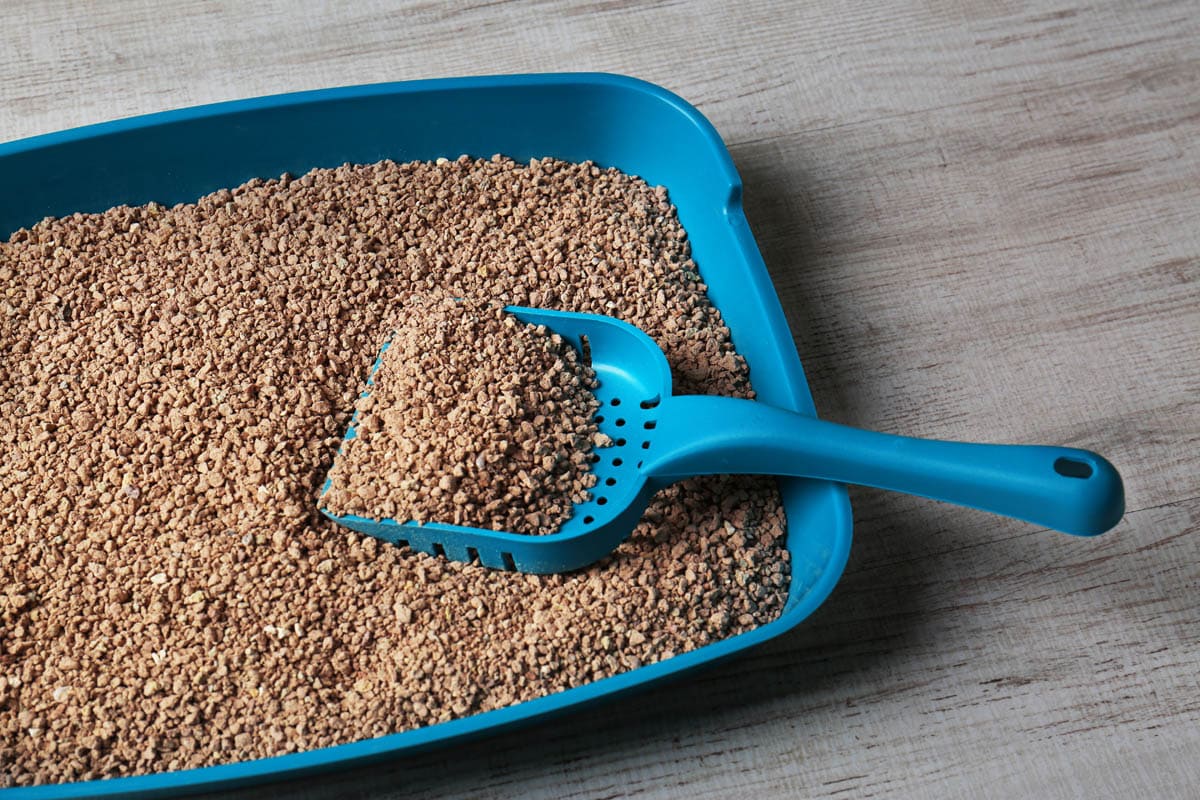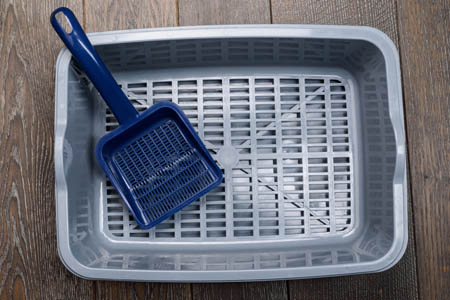There is more to choosing a litter tray than pulling one off the shelf at your local pet store. Litter trays are available in all shapes and sizes from the standard plastic rectangular tray to customised trays which are hidden in furniture.
Choosing the right type of litter tray, providing the correct number of trays and placing them in different locations will all help to guarantee litter tray success.
Litter tray basics
- Provide one litter tray per cat plus one additional tray. Two trays for one cat, three trays for two cats, four trays for three cats.
- Place litter in different locations and at least one tray on every level.
- The ideal length of the litter tray should be 1 to 1.5 times longer than the cat.
- Large storage boxes can be useful for large cats or cats with a tendency to flick cat litter out of the tray.
- Trays with low sides are recommended for kittens and older cats with mobility issues due to arthritis.
- Remove solids twice a day and empty them and replace them with fresh litter once a week.
- Add a 3-inch layer of cat litter to the tray.
Choosing a litter tray
We must meet the cat’s needs when selecting litter trays, if the cat isn’t happy, he or she may bypass the litter tray altogether. Below we have outlined important considerations.
Size and depth of the litter tray
This may be determined by the number of cats there are in the home. However, it is ideal if the number of cats in the home determines the number of cat boxes available rather than the size. For kittens, shallow cat boxes, no more than three inches deep are advisable.
Material of the box
Heavy and durable plastic is the most advisable material for a cat box and is also the most inexpensive variety in stores. Plus with their simplicity in style, cleaning can prove to be a breeze.
Ease of cleaning
Basic flat boxes are easy to clean because of their simple design. There is no need to remove any lids or covers to scoop or clean. However, some cats frequently kick litter out of the box so if you choose this option, you had better have a whisk broom and a dustpan always at hand.
Covered boxes usually minimise the trouble of having cat litter and waste scattered outside the box since they have hoods that keep all the litter inside. Covered boxes also tend to become stinky due to poor ventilation.
There are also those self-cleaning cat boxes available in the market. The self-cleaning feature of these boxes keep the cat box neat and tidy, but they also require some cleaning from the owner. Every few days the receptacle must be emptied of urine and faeces and sometimes the rake does not get every bit of cat waste so there may be an occasional need for scooping them out.
Types of litter tray
There are a wide variety of designs, styles, and features for cat litter boxes. The owner may have to choose which one will be most convenient for him and his cat.
Basic litter tray

This is a simple rectangular pan that is commonly made of plastic. They come in different depths, sizes, and colours. This design is preferred by most cats. An innovation to this design is to hold the cat box liners in place by securing them under the rim.
Covered cat boxes or hooded litter boxes
These cat litter boxes look like the traditional open-type rectangular pans except for the addition of the hood which partly covers the box. An opening is situated at one end of the box which serves as the entrance and exit way for the cat. The hood is also positioned high enough so that the cat can stand and do its job with ease and comfort.
Covered litter trays provide privacy but can trap odours because of poor ventilation inside. Manufacturers of this type of cat box have offered a solution to this problem. Some variants of the hooded type have vents on top plus a filter that aids in trapping odours. Choose a covered tray large enough to accommodate the pet, has a hood that can be easily maneuvered for easy cleaning, and large vents.
The top entry litter tray is an alternate version of the covered litter tray, with the entry at the top of the tray. This can reduce litter scatter but may be hard for older cats to climb into.

Sifting Boxes
A few other variants of this type are available in the market but the basic model consists of two rectangular pans and a tray that acts as a sifter. Wood pellet cat litter tray works best with sifting trays, as the litter crumbles when it is wet and falls through to the bottom tray.

Self-cleaning box

These electrical-powered high-end litter boxes work with a sensor that activates the self-cleaning machinery a few minutes after the cat has left the box. The cleaning machinery contains a rake that works its way along the litter to scoop out cat pee and poop into a waste receptacle. There is still the need to occasionally clean the unit, especially the cleaning mechanism itself.
Popular brands of self-cleaning litter trays include Litter Maid and Litter Robot.
Designer boxes
Also known as “hidden boxes”, this type of litter box disguises itself as a furniture piece or even a plant. A designer litter box not only serves to be the cat’s convenient toilet but can also function as an accent for the room in which it is located. Although the containers are commonly not large enough, some designs are big and more open. Try to find one which provides good ventilation.
How much do litter trays cost?
The basic flat box is the most affordable of all the designs mentioned and can be purchased for a few dollars. At the other end of the price spectrum is the self-cleaning litter tray which can cost several hundreds of dollars.
Appealing to the cat
Cats generally do fine with the open box type. Covered boxes offer the “privacy” which some cats like but some cats feel trapped inside them. Owners of designer boxes may find it attractive to put them in places where they will be most appreciated. However, they must be sensitive to the fact that cats most often opt to do their business in a place that is quiet and safe. As for the automated self-cleaning cat litter boxes, some finicky cats may find them comfy since they are clean and spacious. However, they may get psyched out by the mechanical action if they chance to see it actually happen. They might be afraid of using the unit again.
Finding the perfect cat litter box may be a hard task and may require experimentation on the part of the owner. If the owner tries out a box that his pet really does not like, he should not insist on the cat using it. Though this experimentation may become tedious, it can be necessary to find the perfect box for your cat. Providing the cat its preferred litter box can bring good health and satisfaction to both owner and pet, and the carpet as well! We hope that you finished reading this article having learned at least a little bit of new information. If so, then we have done our job.

